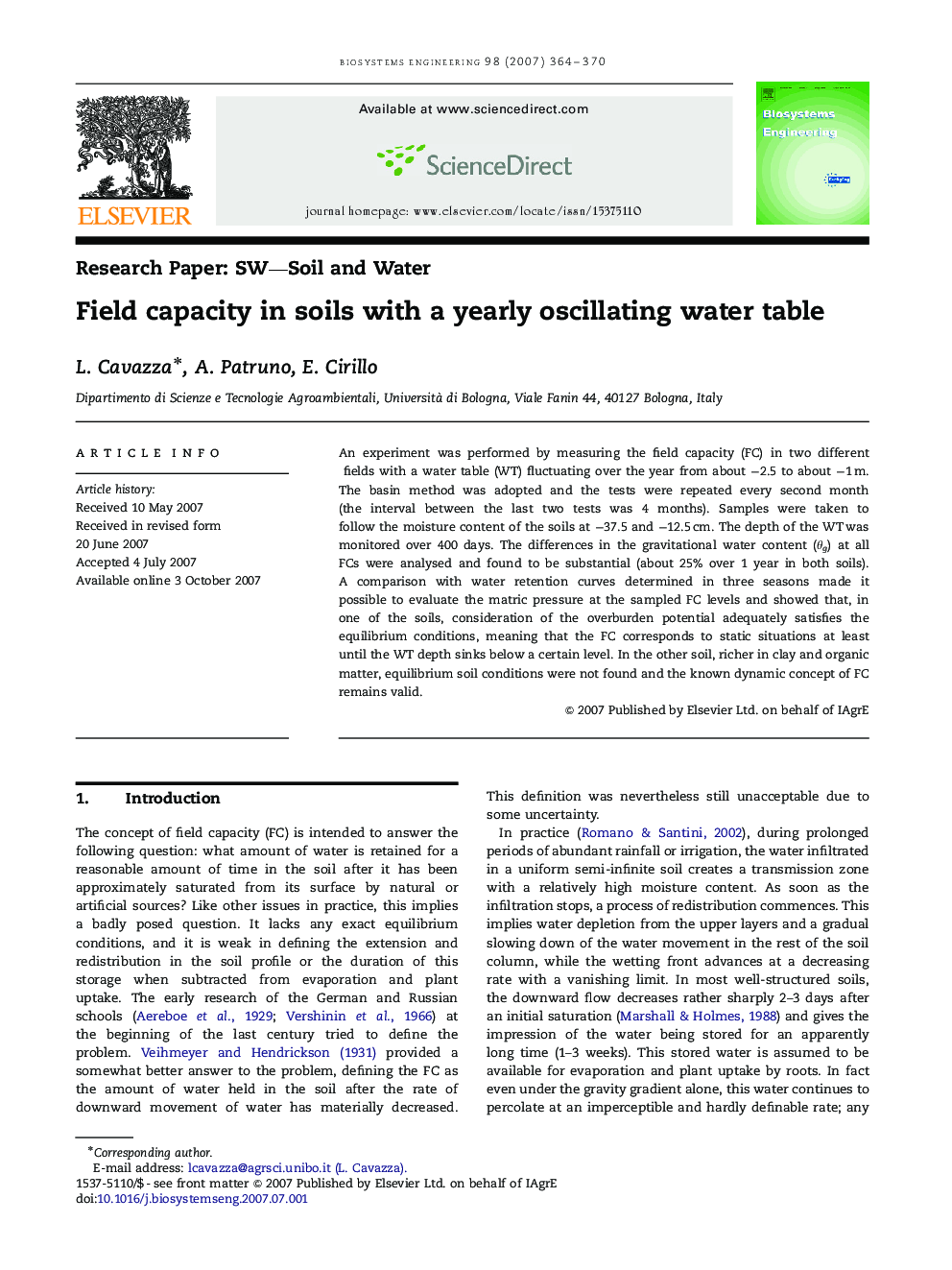| Article ID | Journal | Published Year | Pages | File Type |
|---|---|---|---|---|
| 1712484 | Biosystems Engineering | 2007 | 7 Pages |
An experiment was performed by measuring the field capacity (FC) in two different fields with a water table (WT) fluctuating over the year from about −2.5 to about −1 m. The basin method was adopted and the tests were repeated every second month (the interval between the last two tests was 4 months). Samples were taken to follow the moisture content of the soils at −37.5 and −12.5 cm. The depth of the WT was monitored over 400 days. The differences in the gravitational water content (θg) at all FCs were analysed and found to be substantial (about 25% over 1 year in both soils). A comparison with water retention curves determined in three seasons made it possible to evaluate the matric pressure at the sampled FC levels and showed that, in one of the soils, consideration of the overburden potential adequately satisfies the equilibrium conditions, meaning that the FC corresponds to static situations at least until the WT depth sinks below a certain level. In the other soil, richer in clay and organic matter, equilibrium soil conditions were not found and the known dynamic concept of FC remains valid.
